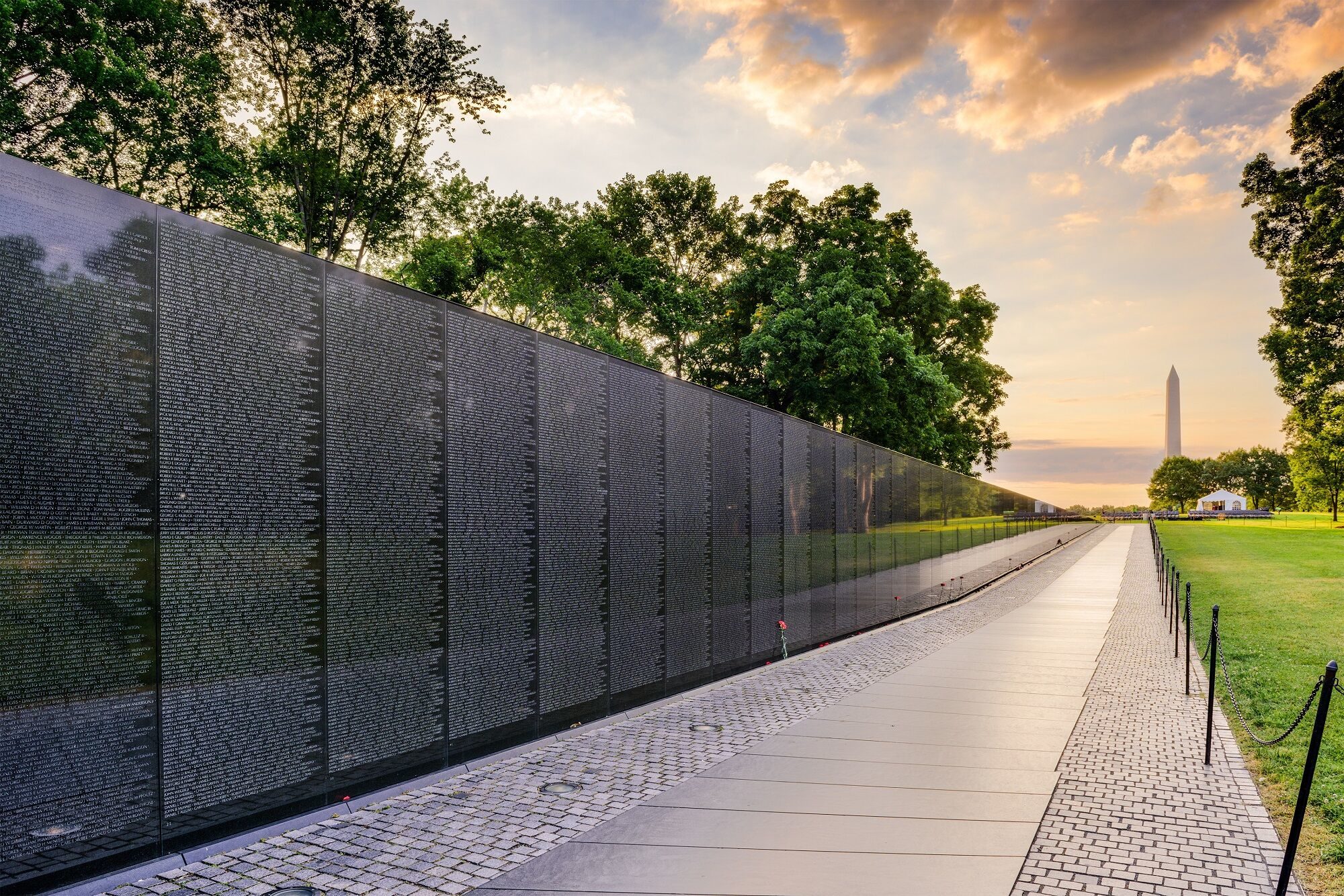The story of the Vietnam Veterans Memorial in Washington, D.C. isn’t actually one about its creator, Maya Lin. It’s not one about design, architecture, or art. It’s not one about the controversy surrounding its creation. It’s not even really about the names chiseled into the polished granite walls that anchor the site, as deeply important as those names and the people living and dead attached to them are. It’s one about resetting how we remember, how we view war and history, and how we live with the wounds they inflict.
In the late 1970s, with the Vietnam War now fully in America’s rear view and respect for its participants markedly low in the public sphere, infantry veteran Jan Scruggs and others like him looked around and saw a nation that had already let the stories of Korean War soldiers and their families fade from the national dialogue.
As with Vietnam, that war was complicated, unwanted, and without triumphant end. The national consciousness didn’t yet know how to cope with failure—or, at least, a lack of unequivocal victory—in support of a cause few understood over a country few knew existed. In the financial and cultural booms of the 1950s and early 60s, Korea’s complicated, broken soldiers and the complicated grief of the families who lost their sons, husbands, and brothers wound up stored under boxes in the national attic.
The Vietnam War was even more primed for forgetting. The conflict that divided family members and generations from each other didn’t simply run counter to the stories America told to itself, it detonated them. Vietnam was the spark that turned long-smoking conflicts over race, culture, class, gender, government, economics, and patriotism into unavoidable firestorms. During it, one could see death, corruption, and war crimes on the evening news even as presidents and Bonanza peddled a vision of a just and successful nation. Again, there was no easy place in the American mind for the soldiers coming home from that conflict or the families of those who had left for Vietnam never to return. The dissonance, the tragedy, didn’t fit into our conceptual framework.
As Boomers turned from radicals to professionals, and the news from demonstrations to gas prices, the temptation to forget must have been strong for those privileged enough to do so. In response, Scruggs and Vietnam Veterans Memorial Fund he founded wanted something carved from that tragedy to live alongside the monuments on the National Mall. But a traditional totem for the dead simply wouldn’t have squared with our experience of the war, with its ground truth. So Maya Lin—brilliantly, empathetically, innocently—focused on the living.
Yes, the black wedge of what has come to be known as “The Wall” features the names of over 58,000 men and women who lost their lives in the conflict as previous memorials have. But Lin’s minimalist and profoundly confrontational presentation is an intimate, personal take on public art.
As you may have experienced for yourself (millions do every year), one approaches The Wall with no vision of its totality and enormity, just as one approaches the enormity of loss. We descend down into it until we are inches away from the names of the dead, as close as one can be to someone who exists now only as a recollection or a collection of letters. As we leave, the names and the memories recess and we walk upwards to rejoin the elevation of the Mall around us—a clever physical echo of the process of remembering and returning to present life. All along, the polished granite shows us our faces in reflection. Rather than monumental, it is experiential, centering on the user’s emotions and not a national ideal or myth.
What Lin—and the many people who supported her in the controversial and troubled execution of her vision—offered here wasn’t just a new way of honoring, but a new way of remembering. Through invention, it created a rare opportunity to look back at a difficult moment without judgement or the complications that come from attempting to square emotion with the triumphant legends we tell ourselves. Understanding is its only ideal.
Though the staggering Vietnamese losses are not represented here, the focus is on people and the effect of their absence. Despite its striking abstract nature, it is the most human of tributes. A grave and tombstone for a national family to mourn by, it is a memorial, not a monument.
In many ways an inadvertent reaction to Reaganism, what The Wall represented—or perhaps even what it helped spur—was a new way for Americans to look at their past, one that embraced the intimate human costs of victory and defeat, of cruelty and progress. It’s an approach that helped fill a decade with art, music, academic strategies, therapies, and publications that took the processes of memory and emotion into account. It’s an approach that helped us live with the many of the wounds of Vietnam, to at least want to listen the lessons of ‘60s radicalism, to at least try to open our doors to ourselves and each other. That dozens of memorials the world over now adopt Lin’s format offer proof of just how profoundly The Wall changed our approach to history—at least for a moment.
Surely, we’ve regressed in recent years, as visible in both political discourse and on the Mall where even the very human figure of Reverend Martin Luther King Jr. has been reduced to an inhuman stone totem. But even as we fight and fail at new wars, the lessons about death and memory The Wall teaches us are present (one could go so far as to say they’ve shaped veteran’s care policies and even military and foreign policy strategies). More to the point, it’s still there, and will be for centuries. Whenever we begin to forget the human cost of national action, we just need to take a walk on the Mall.
